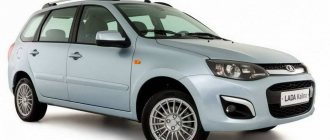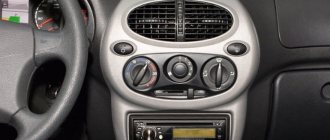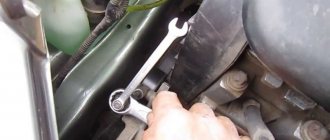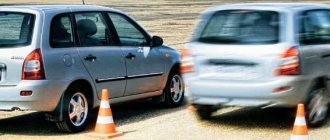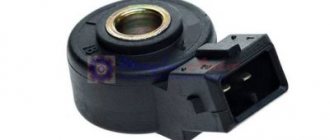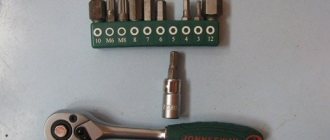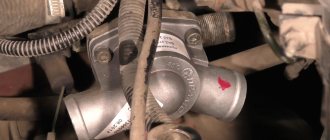Lada: reviews and tests Lada Kalina July 10, 2013
Summer, hot time. Some people will remember it as a trip to the resort, for others it will fly by unnoticed in the work process, and some will still give themselves a gift and buy a new car. Everyone chooses which car to buy for themselves, but why not focus on the new product of the domestic automobile industry - the second generation of Lada Kalina hatchbacks? Let's take a closer look at what this model can please (or disappoint) us with.
Let's start with the history of the car. This will not take too much time, because the Lada Kalina 2 has a very small one. The first copy of the second generation Kalina rolled off the assembly line in May 2013, and the first sales began at the end of June. It is noteworthy that among the new Kalin models there are no sedans - only station wagons and hatchbacks.
According to the designers and manufacturers of the car, all its characteristics have been improved compared to the previous generation, shortcomings have been corrected, the appearance is not inferior to foreign analogues, and the prices make the car a fairly attractive option for purchase by domestic consumers. Is it worth taking AvtoVAZ’s word for it regarding improved technical characteristics? We’ll now try to figure it out.
Malfunction causes, elimination
Despite the fact that the 16 valve engine 21129 with adjustable air intake flows and hydraulic valve clearance compensators is considered a very reliable power drive, malfunctions still occur:
| Gasoline consumption has increased | 1) the catalyst is clogged 2) the fuel pump is broken 3) the air filter is clogged | 1) cleaning the exhaust system 2) replacing the pump 3) changing the cartridge |
| Glow type ignition (operation after switching off) | 1) overheating 2) carbon deposits on the surfaces of valves and combustion chambers | 1) repair of the cooling system, refilling of coolant 2) flushing of the system |
| Emergency pressure indication | 1) wear of the oil pump or main bearings 2) malfunction of the sensor 3) circuit closure 4) oil level is insufficient | 1)replacement of consumables 2)installation of a new sensor 3) wiring repair 4) adding oil |
| Reduced cravings | 1) breakdown of the DPKV 2) clogged filters 3) COURT firmware failure 4) clutch wear 5) timing adjustment failure | 1) replacing the crankshaft position sensor 2) replacing filters 3) flashing 4)replacement of a set or disk 5) phase adjustment, belt replacement |
Gasoline consumption
How economical is the Lada Kalina 2, equipped with an automatic transmission? There is no single answer to this question, since driving on city streets is extremely unpredictable, especially given the constant traffic jams. It may also happen that even 15 liters per 100 km is not the limit, although on average a car consumes no more than 12 liters per 100 km.
However, leaving the city puts everything in its place: covering tens of kilometers on the highway at a speed of 110 km/h showed fuel consumption not exceeding 8 liters. Moreover, if you drive at a speed no higher than 90 km/h, the consumption will be less than 7 liters.
Unfortunately, it is worth noting that it is not the cheapest 95-octane gasoline that needs to be filled into the fuel tank.
Read more about testing in different weather conditions
On snow-covered city streets, you should pay more attention to sharp or dynamic maneuvers, namely acceleration and braking, since the car constantly strives to deviate from the intended course.
For the sake of fairness, it is worth noting that it does not come to dangerous situations: as soon as the car changes its trajectory, electronic assistants (ESP or ABS) are activated.
The dynamic stabilization system prevents slipping of the drive wheels, albeit with some delay, as does the anti-lock braking system, which allows the wheels to lock, albeit briefly.
What's new?
Let's look further. An old problem with not very high-quality components, which added a lot of coins to the treasury of auto repair shop owners - how did they deal with it? The most obvious way was to supply some foreign-made spare parts - this is, in general, what AvtoVAZ did.
Window lifters, a generator, a cooling system and several other parts on Kalina 2 are now imported. Let's hope that now the new reviews from the owners of the Lada Kalina 2 will not be full of negativity about the massive failure of generators, as happened after the recent “modernization of the Kalina”.
It would seem that domestic engineers are admitting their own insolvency due to the pervasive use of imported components? Not at all - it’s just that the car has now become even more “foreign” (as you know, the design of the car was also done not by the “Russian Ivan”, but by the British Steve Mattin).
As standard, the car now has a decent multimedia system with the ability to connect USB devices and even interact with a phone using Bluetooth (you can use the “hands free” system). And the “luxury” equipment is equipped with a navigation system.
In addition, in comparison with the previous generation Kalin, the new car has a more convenient manual transmission with a cable drive, which has reduced the gear shifting effort, as well as the longitudinal stroke and play of the lever.
The chassis, developed by AvtoVAZ designers together with Renault specialists, has also changed for the better. The car has become more stable and better controllable.
Maximum speed
Now it’s time to figure out the maximum speed, which, according to the car’s passport characteristics, is 168 km/h. In fact, the speed is low and there should be no problems in achieving it, but there are the following points:
- up to 60 km/h Kalina accelerates with ease;
- up to 100 km/h – quite confidently;
- up to 120 km/h – tolerable;
- but after 120 km/h, each subsequent kilometer per hour is very difficult: this is evidenced by the unbearable roar of the engine, working at the limit of its capabilities.
Lada Kalina 2, maximum speed test
The only saving grace is that there are no deviations from the trajectory, and the feeling of fear of speed that the driver may have passes quickly enough. Be that as it may, Kalina still managed to accelerate to 167 km/h, and we can conditionally assume that this model has passed the speed standard.
Modifications (5)
| Model | Configuration | Max. speed | Acceleration 0-100 km/h |
| VAZ Kalina II Station wagon 5 doors. | 1.6 MT (106 hp), 148 N*m /4000 rpm. (2013 – ) | 180 km/h | 11.7 sec. |
| VAZ Kalina II Station wagon 5 doors. | 1.6 MT (98 hp), 145 N*m /4000 rpm. (2013 – ) | 171 km/h | 11.9 sec. |
| VAZ Kalina II Station wagon 5 doors. | 1.6 MT (87 hp), 140 N*m /3800 rpm. (2013 – ) | 164 km/h | 12.6 sec. |
| VAZ Kalina II Station wagon 5 doors. | 1.6 AT (98 hp), 145 N*m /4000 rpm. (2013 – ) | 166 km/h | 13.8 sec. |
| VAZ Kalina II Station wagon 5 doors. | 1.6 AT (87 hp), 140 N*m /3800 rpm. (2014 – ) | 161 km/h | 14.2 sec. |
Advantages and disadvantages
Among the advantages of Kalina 2, both testers and new car owners primarily highlight the original design. For decades, it was believed that beautiful cars are made only abroad, and the Russian auto industry lagged behind in this regard by at least 10–15 years, but now everything is not so clear.
It is worth noting the increased engine power and a different quality of the dashboard with a more convenient location of sensors and scales. An airbag is now even included as standard. The reliable suspension now has an increased service life and the front struts are now much more durable than those of most other domestic cars.
Now about the disadvantages of the new Kalina 2. The disadvantages include, first of all, the too noisy and already quite outdated eight-valve engine (in the “standard” configuration), then the hydraulic adjustment of the headlights (other cars have only had electric adjustment for a long time) and the lack on the dashboard sensor indicating the coolant temperature.
In addition, unfortunately, the quality of the Russian assembly is still “lame” - some small parts may be screwed carelessly or not tightly enough, and in some examples of the car you can hear the doors squeaking against the body while driving.
Salon and comfort
Inside the car, you can notice a more convenient arrangement of instruments on the panel, which now looks much better than in the first Kalina. It is now much more convenient to control the multimedia system and climate control. And the air conditioning system itself, available even in the cheapest versions of the car, has great functionality, not to mention the “Lux” configuration.
The dimensions of the cabin have not changed - however, five people could fit there quite comfortably before. But the trunk volume, although it has become a little larger, is still not comparable with similar parameters of foreign hatchbacks and even standard domestic cars. But still, there is enough space for several suitcases, but to transport potatoes from the dacha, buy a simpler car. The price for this car model is no longer the same as before.
Engines and gearboxes
The first thing that owners of new Kalinas note is clearer gear shifting. This is despite the fact that almost all the gears in the gearbox remain the same. Clarity was achieved through the use of steel synchronizers with a multi-cone gearing system. Brass synchronizers are a thing of the past, and although they were less noisy, it was in first and second gear that they most often failed. Removing the box to replace synchronizers every 15 thousand is not a bright prospect, so the appearance of steel synchronizers will please newly minted Kalinovods.
The engines remained the same in Kalina’s arsenal. These are eight-valve and 16-valve gasoline engines too well known to the public from previous models of the plant. In principle, there can be three engines - an 87-horsepower eight-valve, 92 and 108-horsepower 16-valve engines. They differ in compression ratio and lightweight connecting rods and pistons.
The ratio of speed and engine speed of the Lada Kalina
- Registration
- Entrance
- To the beginning of the forum
- Forum Rules
- Old design
- FAQ
- Search
- Users
_________________ I’m not WEAK-willed, I’m STRONGLY lazy.
it depends on what you think is right
if there is a goal to drive optimally in terms of fuel economy, then 2500 in each gear should be when shifting, respectively, with the main pair 3.9 and the standard series, tires 185/60/14, we get the following shift points up: 1-2 somewhere on 4200 rpm, 2-3 at 3700, 3-4 at 3400, 4-5 at 3400, if down, then 4-5 at 1700, etc. (it's boring and the engine ruins). If you need car dynamics, then up 1-2 6300, 2-3 5300 3-4 4700 4-5 4700, down 5-4 3200 4-3 2700 3-2 2300 and 2-1 1700
Please give me some advice: how to correctly shift gears to 16V? Is it harmful to drive in high gear at low revs? what rpm corresponds to each gear (correctly)?
If you want to use the engine as efficiently as possible, then you need to keep the engine speed within 3000-4500 rpm with the throttle at 50-70%, you will get the best power-efficiency ratio.
If you want to use the engine as efficiently as possible, then you need to keep the engine speed within 3000-4500 rpm with the throttle at 50-70%, you will get the best power-efficiency ratio.
. This is how you can drive if you are alone on a wide road. but in city traffic, especially dense traffic, this will not always work, and for the most part it will not work. and therefore, while the classic driver accelerates, switching to 3rd, you catch up with him in 1st. It's not far from the accident. and therefore optimal acceleration will be at the speed of the entire flow.
Controllability
Handling has become better. Thanks to the steering rack, it has become shorter, and the steering wheel can now be turned from one stop to another in just 3 turns, and not 4, as before. The steering wheel itself in the new car is also attached differently. Due to all this, the sensitivity of control and the rigidity of the steering system have increased. The car reacts faster to the driver’s actions, and it has become easier to avoid obstacles and bumps on the roadway.
In addition, one cannot help but pay attention to the car’s new anti-lock braking system, which in the “luxury” configuration is also supplemented with a stabilization program. The design of the brake system has changed somewhat - some of the parts are now imported.
On-site testing
The final stage of testing is exercises on the site. The maximum value of lateral acceleration that was achieved under the desperate sounds made by Chinese tires was 0.84 g. At the same time, the car tries to fall into an uncontrolled skid, and when the gas is released, the Lada returns to the given trajectory without much difficulty.
Maximum lateral acceleration value
The electric power steering, or rather, its shortcomings, again reminded itself when performing the “snake” exercise. This time the cause of the problem was too much effort, which is not easy for even men to cope with, let alone women. It is unlikely that a fragile girl will be able to quickly perform a counter-emergency maneuver with such EUR settings.
In the end, the only thing that really pleases is the noticeable progress of VAZ. Be that as it may, the second generation Lada Kalina is no longer the usual “Zhiguli”, although this car still requires significant improvements. Of course, many car enthusiasts would like to see more significant progress, but in this case they should be patient. Domestic manufacturers have something to strive for, and the fact that they are trying to improve their lineup speaks volumes.
Braking test
A series of control braking tests from 100 km/h were carried out on the dry and level concrete surface of the test site. The results range from 36 to 38.5 meters. At least ten attempts were made, and all of them followed the same scenario: pressing the brake pedal - a sharp “nose dive” - the first stage of ABS operation - another “peck” - a complete stop of the car, accompanied by a slight blocking of the wheels.
Lada Kalina 2 testing brakes
During the experiments, neither the car's drift from the trajectory nor its skidding were observed. This is also evidenced by the uniformity of the obtained values: slightly higher values are a consequence of tests carried out after the brakes have warmed up. A short break helped correct this shortcoming, which allowed the car to stop again at a mark slightly exceeding 36 meters.
Again, we must not forget that the tests were carried out under normal conditions, so we can only guess about the performance that the car could demonstrate in other situations (for example, wet asphalt or different road surfaces).
Braking measurements were carried out on Linglong summer tires, which the Lada Kalina was equipped with when purchased. Instrumental measurements were also carried out on Toyo winter tires, but it looked less like tests and more like attempts to destroy a new set of tires.
Configurations and prices of Lada Kalina 2
The standard configuration of the 2013 Kalina 2 will cost the new owner from 324 thousand rubles, the “norm” – 341 thousand rubles, and prices for the “Lux” configuration start from 408 thousand rubles.
| Equipment | Price, rub | Engine | Transmission | type of drive | Acceleration to 100 km/h, s | Consumption city/highway, l | Maximum speed, km/h |
| 1.6 (8V) manual transmission Standard0) | 324 000 | gasoline 1.6l (87 hp) | Mechanics | front | 12,4 | n/a / n/a | 169 |
| 1.6 (8V) manual transmission Norma2) | 341 000 | gasoline 1.6l (87 hp) | Mechanics | front | 12,4 | n/a / n/a | 169 |
| 1.6 (16V) manual transmission Lux0) | 408 000 | gasoline 1.6l (106 hp) | Mechanics | front | 11,6 | n/a / n/a | 179 |
| 1.6 (16V) automatic transmission Lux0) | 445 000 | gasoline 1.6l (98 hp) | machine | front | 13,8 | n/a / n/a | 171 |
Reviews
Reviews and tests
Accelerating dynamics
The result of measurements of Kalina 2's acceleration to 100 km/h clearly does not speak in favor of winter tires, because the best readings achieved on them were 14.9 s. An experiment conducted under the same conditions, but on summer tires, immediately showed a time saving of 0.3 s, and subsequently by more than 1 s (13.8 s). And this is not the limit!
During the following experiment, some preparatory actions were carried out:
- a passenger left the car and noted the results;
- The auto light and heater fan were completely turned off.
The first run after such transformations gave a result of exactly 13 s, the second – 13.1 s, and in both cases the result was better than in the car’s passport data.
As is known, the manufacturers of the Lada Kalina 2 with automatic transmission indicated in the passport an acceleration time of 13.7 s.
You can only imagine what a car can do if you completely empty the trunk or even remove the rear seats. It’s simply amazing how sensitive the dynamics of the second generation Kalina are to loading! It turns out that if minus 70 kg of weight increases acceleration by at least 0.7 s, then what should we expect when the car is fully loaded with both passengers and luggage? By rough logic, it should accelerate in 18–20 seconds?
Lada Kalina 2 photos
Read further:
The most expensive Lada Kalina is estimated at 650,000 rubles
Datsun mi-DO
FAW Besturn B50
A brief excursion into the recent past
First Kalina
Lada Kalina first appeared on the domestic market back in 2007. Then the whole country started talking about her: some with hope and surprise, and others with the usual sarcasm. Professionals did not believe that a domestic plant was capable of creating a high-quality product that was not inferior in its parameters to its European counterparts. The characteristics were stated to be high, but at that time not all of them were fully realized.
The Yellow Kalina became famous because the president himself drove it, but still it required serious improvements. The appearance deserved all sorts of praise, but the technical part was not at all pleasing. The speed performance was very good, the dynamics were also at the same level, driving comfort was almost equal to the Lada with some famous Japanese and American models. But reliability left much to be desired. AvtoVAZ engineers knew this and were already preparing for the next stage - the modernization of the model, which was completed only in 2013.
After several years of painstaking work, a car sparkling under the spotlights and shimmering with mother-of-pearl rolled off the assembly line. It is worth noting an important fact: it did not have the disadvantages of its predecessor. Even the most demanding critics responded positively to the new product, which was the best reward for those people who invested so much work, time and effort into the new Lada.
